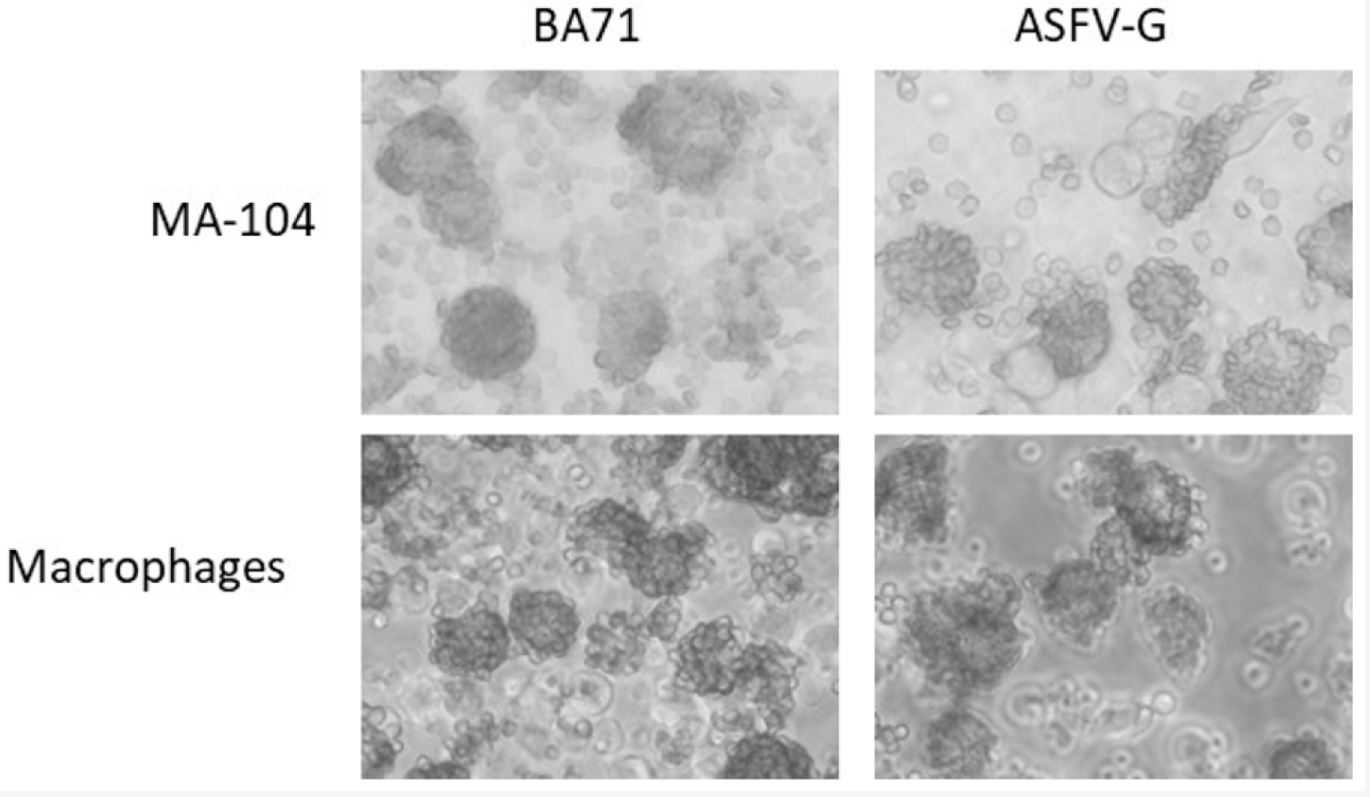



New cell line rapidly detects African swine fever virus
Scientists have identified a new way to detect the presence of live African swine fever virus (ASFV) that minimizes the need for samples from live animals and provides easier access to veterinary labs that need to diagnose the virus, according to the US Department of Agriculture's (USDA) Agricultural Research Service (ARS).
"We have identified a cell-line that can be used to isolate and detect the presence of the live virus," said ARS Scientist Dr. Douglas Gladue. "This is a critical breakthrough and a tremendous step for African swine fever virus diagnostics."
There are currently no available vaccines to prevent ASFV, and outbreak control has often relied on quarantining and removing infected or exposed animals. Until now, effectively detecting live ASFV required collecting blood cells from a live donor swine for every diagnostic test, because the cells could only be used once. The new cell line can be continuously replicated and frozen to create cells for future use, reducing the number of live donor animals needed.
The new cell line is also commercially available to veterinary diagnostic labs that traditionally did not have access to swine blood cells needed to test for live ASFV.
According to the study, diagnosis of ASFV in clinical samples, primarily whole blood, is done using real-time polymerase chain reaction (rt-PCR), a molecular test that detects small parts of the viral genome but cannot detect live infectious virus. Virus isolation is necessary for the confirmation of active infection and downstream analyses, like whole genome sequencing. Currently, virus isolation can only be performed using primary swine macrophages which are infrequently available in most regional veterinary diagnostic laboratories. Production of primary swine macrophages is very time and labor consuming since cells need to be collected from swine blood or isolated from the lungs. Previous studies have shown that ASFV only replicates in established cell lines once the virus adapts in those particular cell lines, usually after a process involving successive passages. To date, no established commercially available cell line has been shown to be suitable for ASFV isolation using field samples.
In this study, researchers identified a cell line that is capable of supporting the detection of ASFV in field samples with a TCID50 sensitivity comparable to that of primary swine macrophages. A robust screening effort of commercially available cell lines resulted in the identification of African green monkey cells MA-104 as a substitute for primary swine macrophages for ASFV virus isolation.
Recent outbreaks of ASFV outside the African continent started after a single introduction of ASFV in the Republic of Georgia in 2007. The disease has recently spread to China and southeast Asian countries including Mongolia, Vietnam, Cameroon, North and South Korea, Laos, Myanmar, Philippines, Timor-Leste, Indonesia, Papua New Guinea, and India. The current "Georgia" outbreak strain is highly contagious and lethal in domestic pigs, causing up to a 100% mortality rate. Even though the virus is not currently present in the United States, the US swine industry could suffer substantial economic losses should an outbreak occur.
The research, which is highlighted in this month's issue of Viruses (open access), was funded through an interagency agreement with the Science and Technology Directorate of the U.S. Department of Homeland Security, U.S. Department of Energy and the USDA. A provisional patent application for this research was filed in April 2020 and the technology is now available for license. ARS scientists at the Plum Island Animal Disease Center in Plum Island, N.Y. will continue to perform research and work towards finding tools to control the spread of ASFV in the nation.









